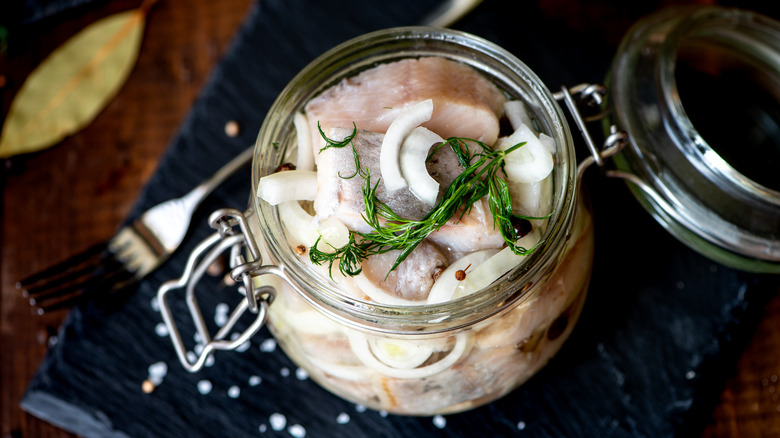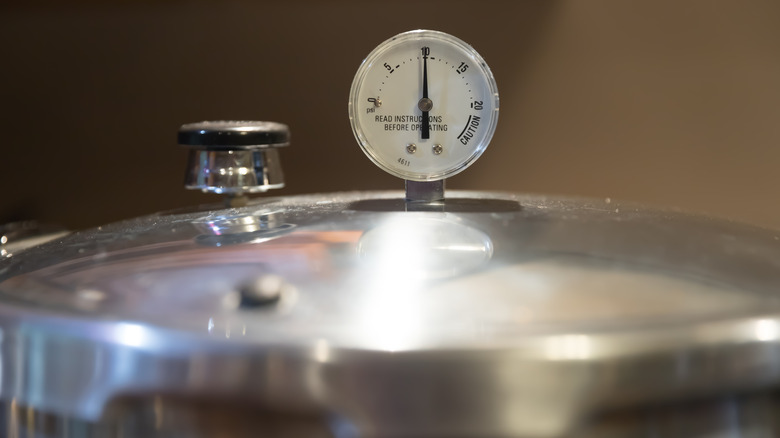The Only Safe Method For Canning Your Own Fish
Even if you just started your canning journey, odds are you already know the golden rules of safe food preservation like the back of your hand. For example, the University of Connecticut reports all avid canners always need to ensure that the jars, lids, and rings they use are in perfect condition. And they should also throw out any family canning recipe written before 1996 since it may not comply with current food safety standards. But most importantly, those who love preserving their own meals need to know that certain foods call for certain canning methods.
Of course, while it's true that Healthy Canning reports that you can safely preserve high-acid treats like strawberries with either pressure or water bath canning, The Spruce Eats notes the same cannot be said for foods with low acidity levels. And if you just scored a huge batch of fish on your last camping trip, your big catch is among the foods you need to be particularly wary of canning for the winter. Because fish has such a low-acid content, Healthline reports it's a great protein choice for those suffering from acid reflux. That means if you want to put away your mackerel or bass for Thanksgiving, there's only one way to do it safely.
Pressure can your fish or don't can it at all
So why does the acidity of your food determine how you can it? According to The Spruce Eats, it matters because foods with a high acidity level are able to kill the spores that cause canned food to grow botulinum — a dangerous bacteria that damages the nervous system if consumed (per the Centers for Disease Control and Prevention). And since water bath canning only kills the botulism bacteria and not the spores, foods like fish that fall low on the pH scale can only be preserved via pressure canning.
As the outlet explains, pressure canning brings your food to a higher temperature than boiled water, so by pressure canning your fish, you'll be killing all traces of the botulism toxin. But if you were to water bath can your big catch, you could risk eating botulism-infected trout for dinner.
To properly pressure can your fish, The National Center for Home Food Preservation reports you'll need to cut each catch into 3-½-inch slices. You'll then place the meat into your jars with the skin facing the glass. After ensuring each container has at least 1 inch of space at the top, you can begin the pressure canning process. Remember to let your pressure-canned food cool before storing it for a delicious (and safe) winter fish feast.

